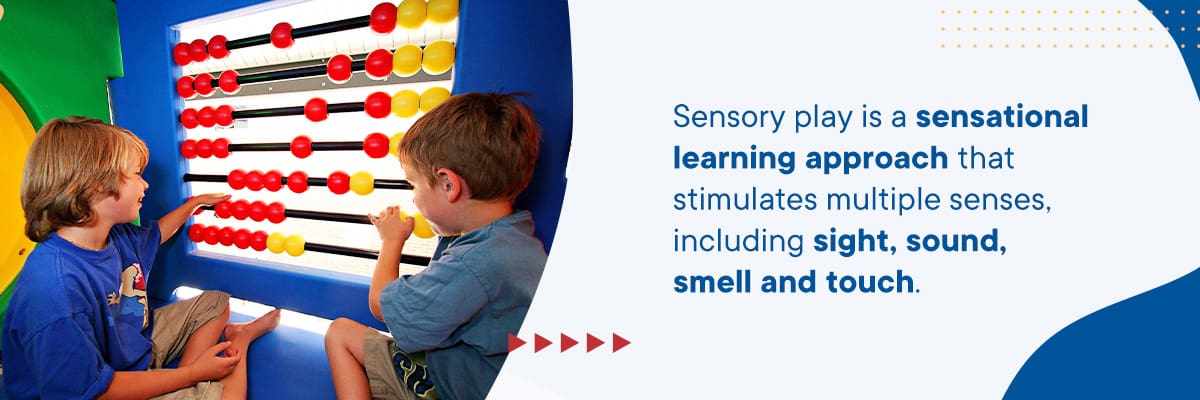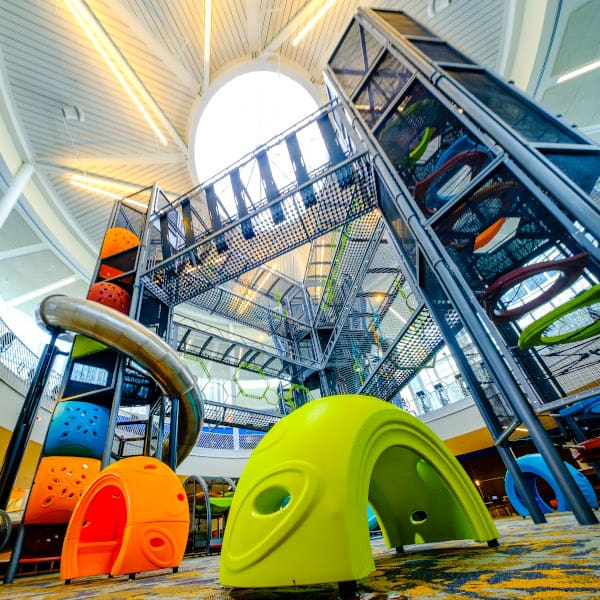Tips for Designing a Playground to Foster Learning

Tips for Designing a Playground to Foster Learning
Play has many advantages for kids, including unstructured learning that happens as they explore the environment and expand their imagination and creativity. Designing educational playgrounds involves creating an informal learning space where kids can develop their physical, social, emotional and cognitive skills.
Educational play can occur indoors or outdoors and involve a wide range of activities, play structures, games, toys or books. Designing a playground that fosters learning involves creating a fun, engaging, interactive and immersive environment.
Understanding Principles of Playground Design
Designing a playground that provides meaningful educational experiences involves setting clear goals and working with experts to make your vision a reality. There are a few main principles to consider when planning and strategizing the construction of an educational playground on your commercial property:
- Provide variety: Maximize the learning opportunities at the playground by providing various play structures that stimulate young minds and keep them engaged for longer.
- Consider aesthetics: Visually appealing play areas spark joy and encourage more kids to play. You can improve the visual appeal of the playground by incorporating fun and bright colors, shapes, patterns, textures, imagery, and movement.
- Ensure easy access: Good flow and easy access guarantee accessibility to all kids, even those with different mobility needs. Following the natural flow of the space and providing multiple entrances and exits help improve access.
- Incorporate natural elements: Spending time in nature has many benefits, including offering abundant learning opportunities and reducing stress and fatigue. Interaction with natural elements like plants, water, sand and wood stimulates their young minds and gives them a better understanding of their environment.
- Maximize comfort: Both outdoor and indoor playground equipment should offer emotional and physical comfort to encourage kids to use them. Bright, clean and soft-sculpted play structures provide comfort to kids.
How to Incorporate Learning Into Playgrounds
Learning on the playground can happen in various ways, as every kid learns differently. Generally, it starts with interactive and educational play equipment that encourages exploration and allows immersive play experiences. By adding a variety of equipment and technology to your play space, you provide a plethora of exciting learning opportunities.
Here are a few top tips for creating an educational playground.
Add Smart Technology
While traditional playgrounds include essential equipment like swings and slides, modern playgrounds incorporate tech-powered interactive panels and games. These smart technology elements provide kids with immersive experiences that stimulate different senses and allow them to develop various skills. There are various ways you can include innovative technology to enhance learning potential on playgrounds:
- Virtual reality (VR) and augmented reality (AR): Incorporating AR and VR playgrounds adds a new dimension to the playground by allowing kids to interact with items that aren’t in their physical space. It adds a new layer of engagement by bringing virtual creatures, characters and environments they can access on smart devices and wearable devices.
- Interactive playground panels: Vibrant activity panels for playgrounds inject fun and offer numerous learning opportunities. Playground wall panels cater to kids of all ages and abilities to spark their creativity and imagination, sharpen their gross and fine motor skills and support logic and analysis.
- Gamified experiences: Gamified play experiences engage kids physically and mentally by combining different skill levels to promote active play. They incorporate immersive technology, puzzles, color lights and climbing features that create an exciting play experience. For example, STOMP — the interactive freestanding playground equipment — promotes physical activity in a gamified way.
Introduce Sensory Play Elements

Sensory play is a sensational learning approach that stimulates multiple senses, including sight, sound, smell and touch. You can foster sensory play on your playground by investing in playground elements that engage different senses and encourage learning.
For example, vibrant colors and different shapes engage sight, while varying textures using materials like rubber, sand and wood are good for developing the sense of touch. Incorporating fragrant plants and flowers can help kids develop their sense of smell, and adding musical elements encourages healthy exploration of their sense of sound.
The best way to encourage social play is to create zones that focus on specific play types and activities. These zones might include quiet, active, sensory, reflective, social, imaginative and creative play areas to facilitate holistic development and healthy learning.
Design Thematic Play Areas
Themed play areas open a world of possibilities for learning through play. They foster storytelling and create a unique and memorable play experience by reflecting specific concepts and stories, like historical eras and fairytales. Additionally, they improve the overall appeal of your business while engaging young minds.
Here are other ways themed play areas that promote learning:
- Transport kids to an alternate universe or another realm, like an enchanted forest or under the sea.
- Spark creativity through role-playing and other interactions with other themed elements.
- Foster problem-solving and develop social skills as kids work together to play out different narratives.
- Provide opportunities for discovery and exploration, especially when enhanced with hidden wonders and secret dens.
- Create visually engaging environments that spark wonder and creativity.
Create an Inclusive Environment
An inclusive playground’s design and architecture feature multiple challenge levels for kids of different ages, abilities and developmental stages. These playgrounds also have an accessible design that allows kids with mobility devices to use the equipment and encourages them to play with their peers.
An inclusive and accessible playground must meet numerous criteria, such as:
- Establishing accessible entrances and exits to make the play areas more inviting and practical.
- Removing obstacles and hindrances that may limit access to the playgrounds.
- Designating quiet spaces where kids can retreat to during moments of sensory overload.
- Placing wide ramps with handrails to ensure all kids can reach elevated play spaces.
- Installing soft play structures.
- Including rest spots and seating options where kids can relax or meditate on their daily learnings.
Implement an Educational Playground Design Concept With Soft Play®
To maximize the learning potential on playgrounds, you must work with a designer and installer intent on creating structures that provide meaningful educational experiences. At Soft Play, we have over four decades of experience manufacturing play structures for educational centers, including daycares, elementary schools, early childhood centers and community centers.
We offer a variety of educational play elements ideal for installation in indoor and outdoor playgrounds. Our expert designers and engineers will work with you from the initial design stage to conceptualization and installation so you receive quality support throughout the process.
